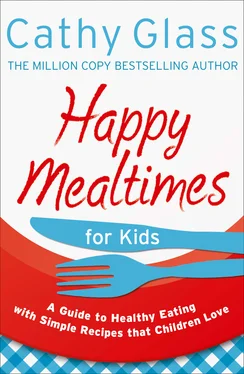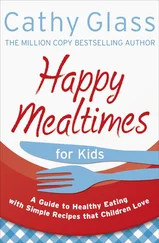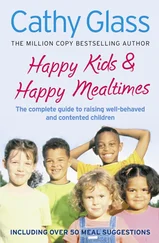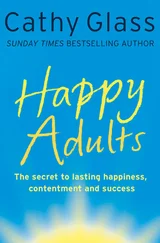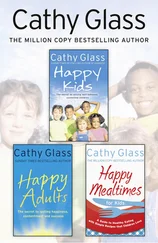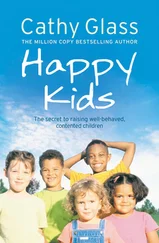Many governments across the world are now so concerned about the poor quality of children’s diets that they are funding initiatives to try to change the eating habits of a generation. Not only does a bad diet stunt a child’s growth and development, and cause obesity and lethargy; it can also produce behavioural problems. I mentioned this in my book Happy Kids (a guide to raising well-behaved and contented children) and received hundreds of emails from parents who, after reading my book, suddenly connected some foods with their child’s bad behaviour. More of that later, but first let’s look at the foods that should be limited in a child’s diet:
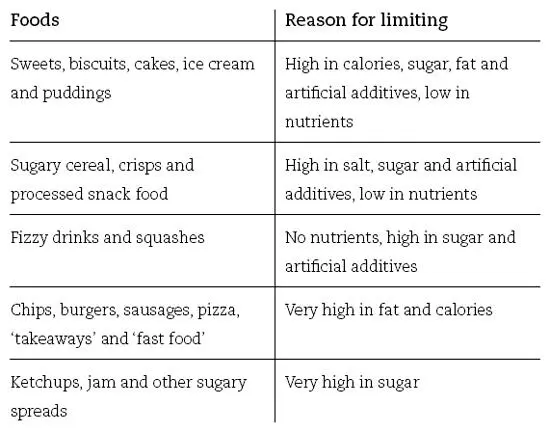
You will probably think of others. Generally speaking, if food is heavily processed and not fresh it is likely to be high in calories, sugar, fat, salt and artificial additives and should be limited. Fortunately ingredients now have to be listed on the food packaging, so check if you are unsure. And remember the ingredients are listed in descending order of the amount included – with the highest first – so if the first ingredient listed is sugar, as with most sweets, then sugar is what that food contains most of. But also remember that a good diet for kids is about limiting these foods, not banning them completely.
Diet and behaviour
‘We are what we eat’ is a well-known phrase, meaning the food that goes into our mouths is absorbed by our bodies and therefore becomes part of us. This is especially true for children, who are still growing and use a larger proportion of their food for growth, as well as cell repair and general health, than adults do. But it isn’t only the child’s body and physical health that are at the mercy of what the child consumes, but also the child’s brain and central nervous system. A finely tuned endocrine and hormone system is responsible for mood, behaviour and mental health, and this relies on a well-balanced diet to function efficiently. There is now a wealth of scientific information – from studies and research – that shows that children’s (and adult’s behaviour) is greatly affected by diet. A healthy diet is therefore essential for both children’s physical development and their emotional and mental well-being.
Sugar
Apart from obvious sugar-laden foods – sweets, biscuits, cakes and puddings, etc. – sugar is added to many other processed foods: for example, baked beans, soups and even some bread. As a result our children have become a nation of ‘sweet tooths’. As well as having detrimental long-term physical effects – tooth decay, obesity, diabetes, high blood pressure, etc. – too much sugar can have an immediate effect on mood and behaviour. Most parents have observed the ‘high’ that too many sweet foods or sugary drinks can have on their child – even the average child without a hyperactivity disorder. The reason for this is that as sugar enters the bloodstream it gives a surge of energy, so the child rushes around on a high; but after the ‘sugar rush’ comes a low as the body dispenses insulin to stabilize itself. The child then becomes tired, irritable and even aggressive, with a craving for something sweet. So begins a pattern of sugar-related highs and lows, and if the child is prone to mood swings or hyperactivity, refined sugar will fuel it. Sugar intake should therefore be moderated and ideally from a natural source, for example, fruit or honey.
Caffeine
Although it is unlikely you will give your child a cup of strong black coffee, the equivalent amount of caffeine can be found in a can of many a fizzy drink, added by the manufacturers. Caffeine is a powerful stimulant – which is why many adults drink coffee in the morning to wake them up. Caffeine acts immediately on the central nervous system, giving a powerful but short-lived high. Some bottles and cans of fizzy drink now state that they are ‘caffeine free’, but they are still in the minority, and you will need to check the label to see if caffeine is present, and in what quantity.
Children’s sensitivity to caffeine varies, but studies have shown that even children who are not prone to ADHD (Attention Deficit and Hyperactivity Disorder) can become hyperactive, lose concentration, suffer from insomnia and have challenging behaviour when they drink caffeine-laden fizzy drinks. Caffeine is also addictive, and many children are addicted (from regularly consuming fizzy drinks) without their parents realizing it. The child craves and seeks out the drinks, and suffers the effects of withdrawal – headaches, listlessness, irritability – until they have had their daily ‘fix’. Caffeine is best avoided by all parents for their children, and if your child has behavioural problems, particularly ADHD, it is absolutely essential to avoid it. There are plenty of enticing soft drinks and juice alternatives available that don’t have added caffeine.
Food additives
Any chemical that is added to food or drink is given an E number. E-numbered chemicals are added for many reasons, including appearance, shelf life, texture and taste. All food additives, including those with E numbers, must be listed on the label of the food package, but only European countries have adopted the E number classification. Although each chemical additive is tested and has to pass health and safety checks before being allowed into food, what isn’t tested is the combination of chemicals, and how this combination reacts in the food or the body. Most processed food and drink contains more than one additive, with a packet of brightly coloured sweets containing upward of ten. Even an innocent-looking yoghurt can contain five or more additives if it is sweetened or made to look like the colour of a particular fruit.
Not all additives are synthetic or have harmful effects, and some have been used for years. Many children suffer no ill effects from eating additive-laden processed food, although cause and effect may not be recognized. While you may spot a link between the stomach ache or sickness your child develops after eating a specific food, a headache after eating a doughnut with bright pink icing, for example, may be missed. The full- and long-term effects of consuming additives are not known and research is ongoing. But there is enough evidence to show that as well as some children experiencing physical reactions to additives, mood, behaviour, learning, energy levels and concentration can be affected. Here is a list of additives that research has shown can cause problems in behaviour, but the list is by no means complete:
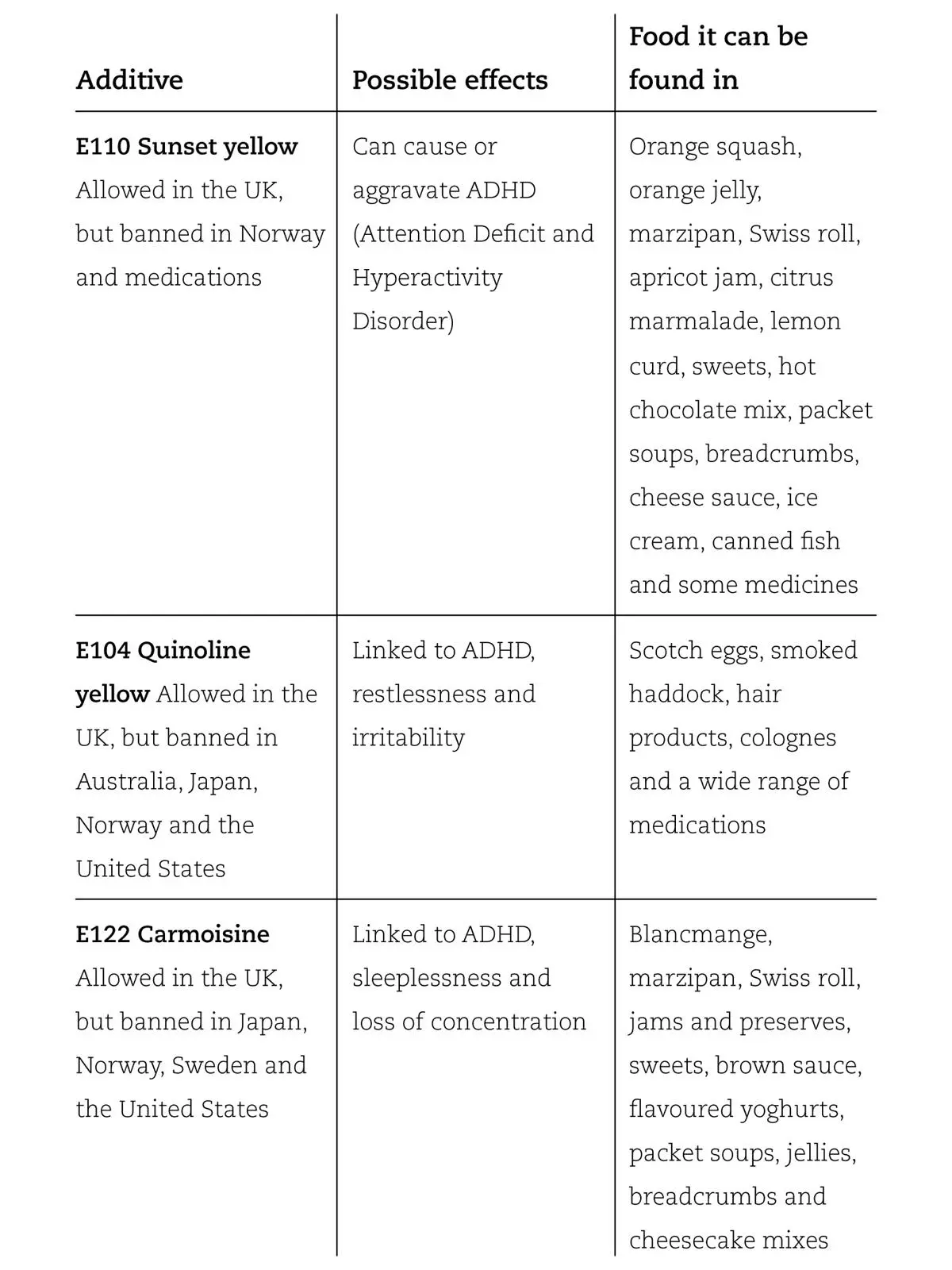
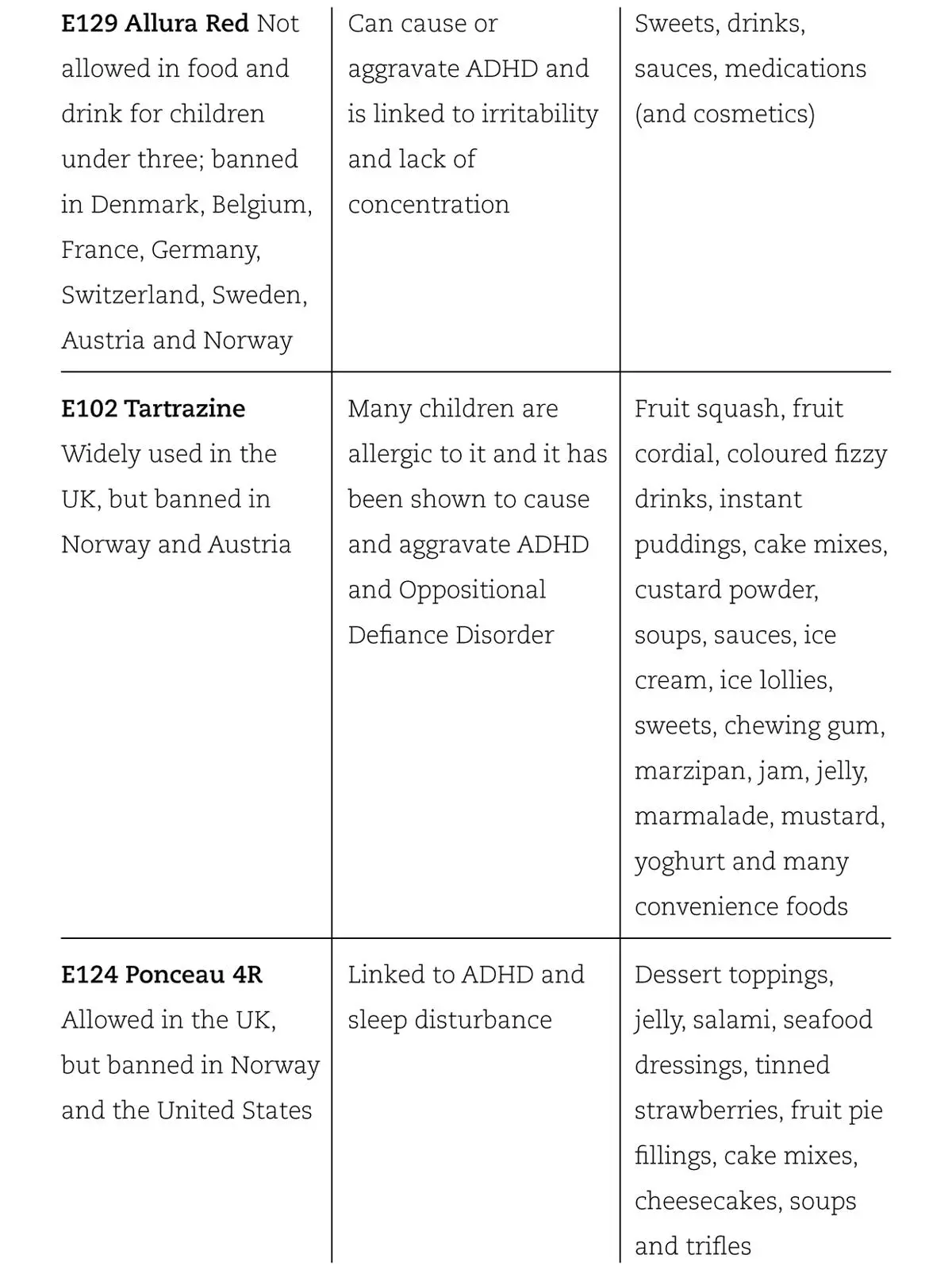
If you know or suspect your child is sensitive to certain food additives, then it is obviously advisable to avoid food and drinks that contain them.
CHAPTER TWO
What is a good diet for kids?
We all accept that a healthy, well-balanced diet is essential for our child’s physical and mental well-being, but what exactly is a well-balanced diet and which foods are best and why? Children need protein, carbohydrates, vitamins and some fat in their diet just as adults do, but they need them in different quantities: more of that later. The best way to make sure your child receives a good diet is to provide a variety of foods, using fresh unprocessed food wherever possible, and limiting foods high in fat and refined sugar. So what exactly does a child need?
Читать дальше
